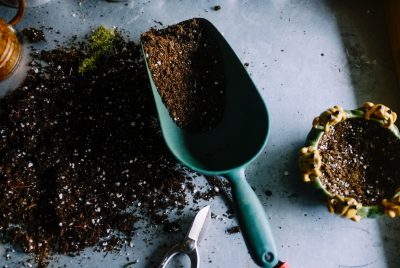Unlock the Greenhouse Magic: Master the Art of Gardening with a Greenhouse
As an avid gardening enthusiast, I cannot stress enough the immense benefits of gardening with a greenhouse. A greenhouse offers an excellent opportunity to extend the growing season, protect delicate plants, and create a controlled environment conducive to healthy plant growth. In this article, I will guide you through the advantages of greenhouse gardening and provide you with helpful suggestions on how to make the most out of your greenhouse gardening experience.
What is a Greenhouse?
A greenhouse is a structure made of transparent materials, typically glass or plastic, designed to trap heat from the sun and create a warm and protected environment for plants. This controlled environment allows gardeners to regulate temperature, humidity, and lighting, providing optimal conditions for plant growth throughout the year.
Benefits of Greenhouse Gardening
- Extended Growing Season: One of the primary advantages of greenhouse gardening is the ability to extend the growing season beyond the limitations of outdoor gardening. With a greenhouse, you can start planting earlier in the spring and continue harvesting well into the fall or even winter.
- Protection from Harsh Weather: Greenhouses act as a shield against extreme weather conditions, such as frost, heavy rain, hail, or strong winds. By cultivating plants within the protected environment, you can shield them from damage and ensure their survival.
- Year-round Plant Variety: With a greenhouse, you have the freedom to grow a wide range of plants, including those that are not native to your region. You can experiment with exotic flowers, tropical fruits, or delicate herbs that would otherwise struggle in your local climate.
- Pest and Disease Control: Greenhouses offer an extra layer of defense against pests and diseases. The enclosed structure helps keep unwanted insects and pathogens at bay, reducing the risk of infestations and allowing you to grow healthy plants without the need for excessive chemical treatments.
- Improved Crop Yield and Quality: The controlled environment provided by a greenhouse allows for optimal growing conditions. By managing temperature, humidity, and lighting, you can ensure faster growth, higher yields, and superior quality produce compared to traditional outdoor gardening.
Choosing the Right Greenhouse
When selecting a greenhouse, consider the following factors:
- Size and Space: Assess the available space in your backyard or garden to determine the appropriate size for your greenhouse. Consider both the growing area and the space required for pathways and equipment.
- Material: Choose between glass or plastic greenhouse materials based on your budget, durability requirements, and insulation needs. Glass provides better aesthetics and longevity, while plastic offers affordability and flexibility.
- Ventilation and Insulation: Look for a greenhouse with adequate ventilation options, such as windows, vents, or fans, to control airflow and prevent excessive heat buildup. Additionally, prioritize insulation features to maintain a stable temperature within the structure.
Setting Up Your Greenhouse
- Location: Find a spot that receives ample sunlight throughout the day. Avoid areas with excessive shade or obstructions that may hinder light penetration.
- Foundation: Ensure a stable foundation for your greenhouse. Depending on the size and design, you may need a concrete base or sturdy anchors to secure the structure.
- Layout and Shelving: Plan the layout of your greenhouse to maximize space efficiency. Install shelves, benches, or hanging systems to accommodate a larger number of plants and provide suitable height for various species.
Selecting Plants for Your Greenhouse
- Consider Your Climate: Choose plants that thrive in the specific climate conditions provided by your greenhouse. Research the temperature, humidity, and light requirements of different plant species before making your selections.
- Mix of Annuals and Perennials: Strike a balance between annuals and perennials in your greenhouse garden. Annuals offer vibrant blooms and provide a constant source of color, while perennials offer longevity and can be enjoyed for years.
- Crop Rotation and Succession Planting: Implement crop rotation techniques and practice succession planting to optimize space and ensure continuous harvests throughout the year.
Greenhouse Maintenance and Care
To maintain a healthy greenhouse environment:
- Regular Cleaning: Clean your greenhouse periodically to remove debris, dust, and pests that may accumulate. This helps prevent diseases and ensures optimum light transmission.
- Proper Watering: Monitor and adjust watering practices based on the needs of your plants. Install an appropriate watering system, such as drip irrigation or misting, to provide consistent moisture without overwatering.
- Pest and Disease Monitoring: Regularly inspect your plants for signs of pests or diseases. Implement organic pest control methods, such as beneficial insects or natural sprays, to address issues promptly and avoid widespread infestations.
Efficient Temperature and Humidity Control
Maintaining proper temperature and humidity levels is crucial for successful greenhouse gardening:
- Thermostats and Heating Systems: Install thermostats to monitor and control the temperature inside your greenhouse. Consider supplemental heating systems, such as space heaters or radiant heating, to prevent temperature fluctuations during colder seasons.
- Ventilation and Shade: Utilize ventilation options and shading techniques to regulate airflow and control excess heat buildup during hotter periods. Automatic vents and shade cloth can help maintain optimal conditions.
Pest and Disease Management
Preventing and managing pests and diseases in your greenhouse:
- Sanitation: Practice good hygiene by removing plant debris, fallen leaves, and any diseased or infected plants from your greenhouse. Proper sanitation helps reduce the risk of pest infestations and disease spread.
- Biological Pest Control: Introduce beneficial insects, such as ladybugs or predatory mites, to control common greenhouse pests like aphids or spider mites. These natural predators can help maintain a balanced ecosystem within your greenhouse.
Extending the Growing Season
To further extend your growing season:
- Cold Frames and Cloches: Utilize cold frames or cloches to provide additional protection to plants during colder months. These structures help trap heat and create a microclimate for early planting and late-season crops.
- Row Covers and Mulching: Cover your plants with row covers and apply organic mulch to insulate the soil and retain warmth. This technique is particularly useful for frost-sensitive plants.
Maximizing Plant Productivity
Enhance plant productivity in your greenhouse:
- Optimal Lighting: Supplement natural light with grow lights to ensure sufficient light levels for your plants, especially during darker months. LED grow lights are energy-efficient and offer customizable spectrums for different growth stages.
- Pruning and Training: Regularly prune and train your plants to promote proper airflow, maximize light exposure, and prevent overcrowding. This practice helps improve plant health and encourages higher yields.
Watering and Irrigation Systems
Efficient watering practices for greenhouse gardening:
- Drip Irrigation: Install a drip irrigation system to deliver water directly to plant roots, minimizing water waste and reducing the risk of fungal diseases.
- Monitoring Soil Moisture: Use soil moisture sensors or manually check the moisture level to ensure your plants receive adequate hydration without becoming waterlogged.
Greenhouse Garden Design
Design ideas to create an aesthetically pleasing greenhouse garden:
- Vertical Gardening: Utilize vertical space by incorporating trellises, hanging baskets, or planters to grow vining plants, such as tomatoes or cucumbers. This maximizes space and adds visual interest.
- Color Coordination: Plan your plant selection to create harmonious color schemes within your greenhouse. Group plants with complementary or contrasting colors for an appealing visual impact.
Conclusion
Gardening with a greenhouse opens up a world of possibilities for both experienced gardeners and beginners alike. The controlled environment, extended growing season, and protection from harsh weather conditions make greenhouse gardening an invaluable tool for cultivating thriving gardens. By selecting the right greenhouse, implementing proper maintenance practices, and utilizing efficient techniques, you can enjoy a bountiful and diverse garden year-round.
FAQs
- Is greenhouse gardening suitable for beginners? Greenhouse gardening can be enjoyed by gardeners of all skill levels. It provides a controlled environment that makes it easier to manage plant growth and reduces the impact of external factors.
- Do I need any special skills to maintain a greenhouse? While basic gardening knowledge is beneficial, greenhouse gardening does not require extensive expertise. With proper research, care, and attention, anyone can successfully maintain a greenhouse.
- Can I grow vegetables and fruits in a greenhouse? Absolutely! Greenhouses are ideal for growing a wide variety of vegetables and fruits. The controlled environment allows for optimal conditions, resulting in healthier plants and higher yields.
- How do I control pests in a greenhouse without using harmful chemicals? Implementing biological pest control methods, such as introducing beneficial insects or using natural sprays, can effectively manage pests in a greenhouse without resorting to harmful chemicals.
- What are some cost-effective ways to heat a greenhouse? Options like using a space heater, radiant heating, or insulating the greenhouse can be cost-effective methods for heating during colder seasons. Additionally, utilizing passive solar techniques can help retain heat during the day.
Remember, greenhouse gardening is a journey of discovery and experimentation. Embrace the possibilities, adapt to the needs of your plants, and enjoy the rewards of a flourishing greenhouse garden!





